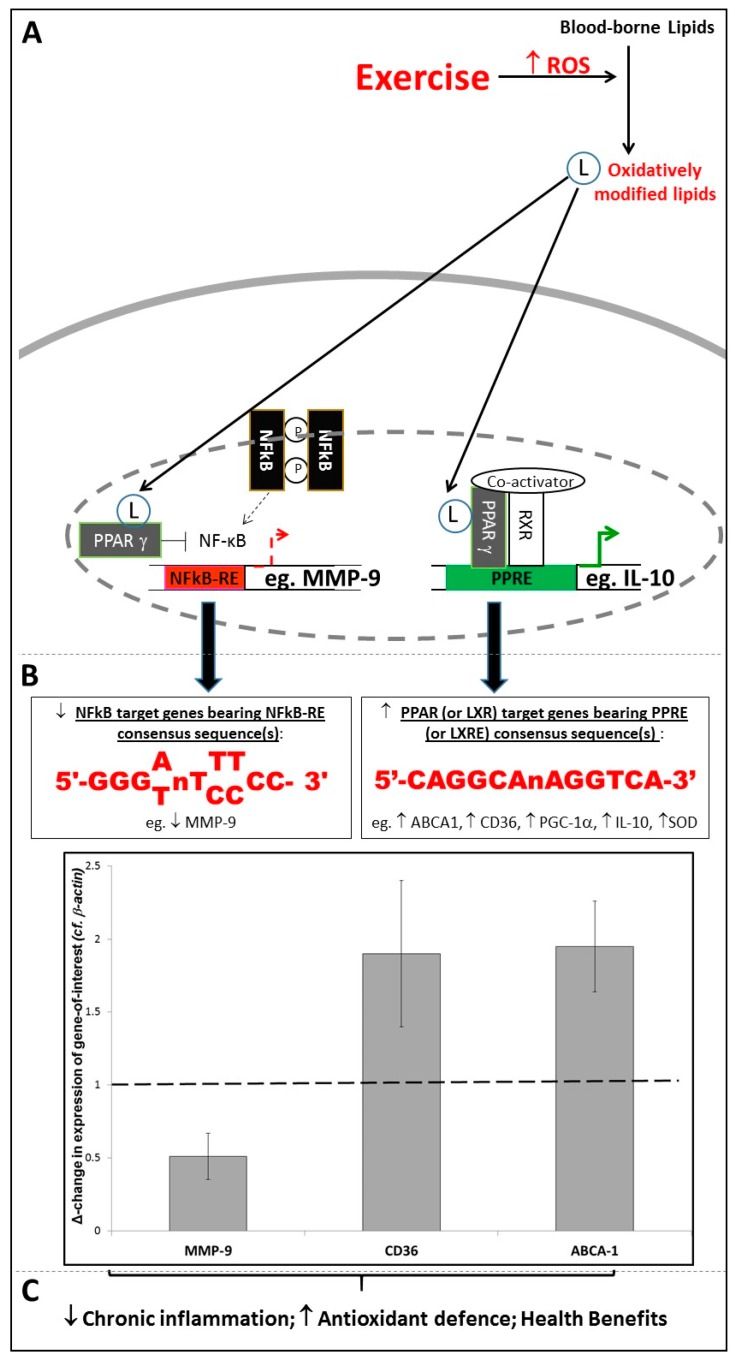Figure 1.
The Role of Response-Elements in Exercise-Associated Redox-Sensitive Signalling Responses. (A,B) Exercise triggers oxidative modification of blood-borne lipids, with the resulting modified lipids acting as ligands for transcription factors such as Peroxisome Proliferator Activated Receptor-gamma (PPARγ), facilitating (i) enhanced binding of PPARγ to target genes bearing PPREs/(ii) transrepression of binding of Nuclear Factor-kappaB (NF-κB) to target genes bearing NF-κB-REs; (C) As a result, PPARγ target genes are upregulated, and NF-κB target genes are downregulated, following exercise; the graph shows RT-PCR data (Mean ± SEM) showing significant downregulation of MMP-9 mRNA, and upregulation of CD36 and ABCA1 mRNA, following completion of an 8-week exercise programme (n = 22; p < 0.05 in all cases). (RT-PCR data are adapted from Webb et al., 2016 [56]).

